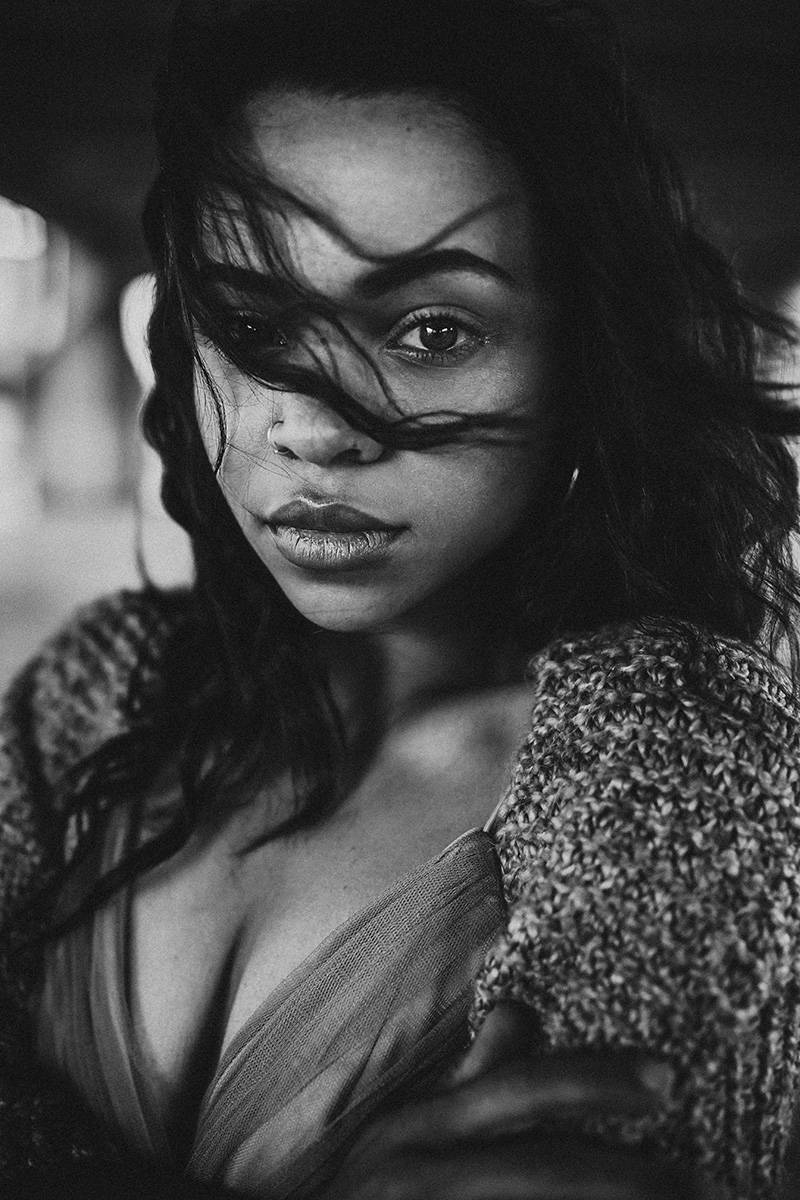Using Natural Light in Portrait Photography by Liz Davenport
Portrait photography with natural lighting is a booming business! Executives need new headshots, families want memories of tiny toes and laughing children, and seniors feel like celebrating (and want to look good doing it).
When using the sun as your light source, you only need your camera and natural light. But as simple as that sounds, it’s not just a point-and-shoot process. To capture beautiful portraits, you have to understand how to make the light work for you.
Lensbaby Edge 35 | IS0 400 | f 3.5 | 1/250 | @queenkyn
Know When to Shoot
In natural light photography, results can vary greatly depending on several factors, one of the most important being the time of day you shoot.
The Blue Hour
The blue hour is a 20-minute period before sunrise or right after sunset when the sun has fallen under the horizon line. The sky takes on a cool blue color that pairs wonderfully with the bright artificial lights of cities.
Golden Hour Photography
The golden hour is a 15-to-60-minute period right after sunrise and right before sunset. The sun is low on the horizon and creates a warm, soft light that flatters human features and highlights the environment in a way that is nothing short of magical.
Shooting Midday
Around noon, the sun is at its highest point in the sky, and the light and shadows it creates can be extremely harsh. Many photographers shy away from a midday shoot, but if you’re looking for a stark contrast, give it a try.
Direction
Facing Towards the Light Source
When shooting portraits, the easiest way to illuminate your subject in natural light photography is to have them face the sun. This gives faces a beautiful glow and reduces shadows on the subject. When shooting this way, be mindful of your shadow. Your body will be between the sun and the subject, and you don’t want your shadow to ruin the shot.
Lensbaby Edge 35 | ISO 250 | f3.5 | 1/320 | @queenkyn
Backlighting Your Subject
If you love images with lens flare and sun-drenched subjects, shoot so your subject is between you and the sun. It’s best to play with angles to get your desired effect but start with the sun about 45 degrees from the subject, and you can shift your position depending on how much light you want to flood your frame.
Lensbaby Edge 35 | ISO 125 | f3.5 | 1/640 | @queenkyn
Sidelight Your Subject
To sidelight your subject, place them about 90 degrees from the sun. This will illuminate one side and cast the other side in shadow. Side lighting is used to showcase shape and form, but it does provide harsh shadows. If you prefer subjects more evenly lit, you can use a reflector on the shady side.
Go Inside
Window light creates beautiful portraits. For a softer effect, place your subject in the shadows right at the point where the shadow and light meet. However, if you’d prefer something with a bit more contrast, place your subject directly in the window light and expose for the highlights.
Tip: When shooting with natural light indoors, remember to turn off any overhead lights or lamps. If you leave these on, it can cause problems with the image’s white balance. The light temperatures could conflict, and it might be hard to balance in post-processing.
Modifying Natural Light
If you happen to find yourself in a lighting situation that is less than ideal, there are a number of tools that you can use to reshape and change the type of light that falls on your subject.
"When shooting with natural light indoors, remember to turn off any overhead lights or lamps."
Reflectors
A reflector is a tool that photographers use to bounce light. In portrait photography, the reflector is typically used to soften shadows created by the sun. Reflectors can be purchased online, at your local photography store, or you can use environmental reflectors. Such as lightly colored walls and floors, rocks, beaches, or snow. Some photographers even wear a white shirt for its reflective properties.
Diffusers
A diffuser is a semi-translucent sheet that filters the sun’s harsh rays and creates a soft, even light. When shooting in direct light, place the diffuser between the sun and your subject—the closer to the subject, the smoother the light. Again, diffusers can be purchased online or at a photography store, but you can also use simple things like sheets and linens.
Lensbaby Burnside 35 | ISO 400 | f2.8 | 1/160
Open Shade
Shooting in open shade is a perfect way to combat the harsh light of midday. First, place your subject in a large shadow pocket and have them face towards the light. This will eliminate the harsh shadows and create a beautiful, even light — while still capturing catchlights in the eyes.
35mm | ISO 320 | f2.0 | 1/250
The model for this series, Kynya Kirch, is an actress and model based in the Kansas City-metro. She works in the fashion, commercial, and film industries and can be booked through her website kynyakirch.com or via Instagram at @queenkyn.
Learning about natural light and how to control it will improve your portrait photography immeasurably. Play around and find what works best for your style!




Leave a comment
All comments are moderated before being published.
This site is protected by hCaptcha and the hCaptcha Privacy Policy and Terms of Service apply.